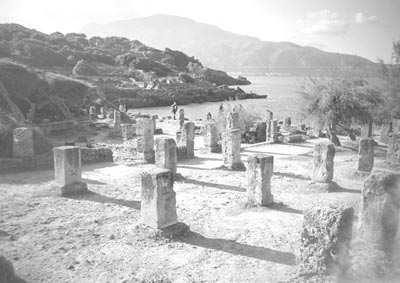Algeria with Adventures Abroad
Here are some highlights of an 11-day tour to Algeria I took Oct. 27-Nov. 6, 2007, with Adventures Abroad (1124 Fir Ave., Ste. 101, Blaine, WA 98230; 800/665-3998). The land price of $2,290 included dinners and breakfasts. The single supplement was $400; insurance cost $334, and round-trip air from Miami to Algiers was $1,525.
Our group of 13, a few Canadians and the rest Americans, began our tour staying at Hôtel el Djazair in Algiers, which was truly deluxe. On the first day, we had a city tour and visits to the 17th-century Casbah, the Bardo Museum, the Museum of Islamic Art and the Museum of Folk Art — too many museums for one day, as most of us suffered from jet lag and after a while the mind shut down.
All the museum exhibits were in French and Arabic, and the docents spoke little or no English. Wherever we went on the tour, the locals spoke to our escort, Joshua Hergesheimer, who would translate. The same was true of our local guide; she would speak to Joshua, who would translate for us.
Before leaving for the tour, I had read a State Department warning about travel in Algeria. On the tour, we had security in the form of a police escort ahead of our van, with three plainclothes police in a car behind us. They were armed with revolvers and we were told to not take pictures of them. After we left Algiers, the escort would travel with us, then hand us off to other police waiting along the route.
We traveled through the mountainous Kabylie region, inhabited by Berbers, to the UNESCO World Heritage City of Djemila, with its well-preserved forum, basilicas, temples and triumphal arches, and to Constantine, a city split by the spectacular Gorge of Sidi M’Cid.
Our hotel in Constantine, the Cirta, was clean but had seen better days. In the bathrooms there were no electrical outlets for shavers.
From Constantine we toured Timgad, founded by Emperor Trajan in A.D. 100 at the intersection of six roads. The site is still being excavated.
We flew back to Algiers. Originally, the tour was supposed to proceed in the morning to Djanet in the Sahara, but Air Algeria changed our flight, so we made an unplanned tour of the Basilica of Notre-Dame d’Afrique and then, because our hotel was fully booked and we could not get day rooms, waited in the lobby until we returned to the airport for our midnight flight. We arrived at the very simple Hotel Djanet at 4 a.m. and our touring day started again at 6:30 a.m.
We were in Djanet to see Tassili National Park, which has been called “the world’s largest prehistoric art gallery.” There are rock paintings and engravings that date back to the Neolithic period. (This area of the Sahara once had a more hospitable climate.) To see the cave paintings of Tilehene took an arduous climb over rocks and boulders, and it was even harder getting down.
We enjoyed wonderful picnic lunches in the desert oases and had a festive dinner of roasted goat under the stars (the meat was tough).
Returning to Algiers, we drove to the Roman ruins of Tipasa and then Cherchell (the former Caesarea), whose museum has some excellent statues carved in the Greek style.
This was an interesting tour. The Algerian government will have much to accomplish to improve tourism: better hotels, guides who know English, and a more secure country overall. A month after our trip, two suicide bombers attacked in Algiers, and there have been kidnappings and even an attempt on the life of the president’s wife.
Even though most of the Algerians we met on this trip spoke little or no English, they all were very friendly.
PHILIP SHART
Tamarac, FL

